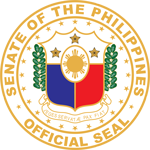Senator Win Gatchalian is seeking a unified electrification program to expedite the electrification of all households in the country, particularly those located in rural communities.

Currently, the electrification of households in the country is being undertaken by the National Electrification Administration (NEA) through its Sitio Electrification Program (SEP) and the Department of Energy (DOE) through its Total Electrification Project (TEP). However, the DOE still downloads the money to NEA and to the National Power Corporation (NPC).
Despite various electrification programs undertaken over the past decades, Gatchalian noted that total electrification of all households in the country continues to be unfulfilled. Based on the DOE’s data, the household electrification level stands at 95.56%, as of March this year.
While the electrification rate in Luzon stands at 98.71% and 96.97% in the Visayas, Mindanao has only 86.39% electrification rate due to the low electrification level of electric cooperatives. Most households without electricity are located in Basilan, Lanao del Sur, and Sulu provinces.
“Napakababa ng utilization ng DOE sa pondo nito para sa electrification,” Gatchalian said, adding that from the disbursement rate of 0.62% in 2021 to 96.62% as of August 2022, the obligation rate of the electrification budget went down from last year’s 83.56% to 0.33% as of August this year, citing the DOE’s data on the TEP fund utilization rate.
“It’s deplorable that in this time and age, over 1 million rural households in the country are not able to reap the many benefits of electrification,” Gatchalian pointed out.
“There has to be a clear policy on which agency is responsible in pursuing rural electrification and that is why we need to harmonize all existing programs for electrification. Sa nangyayari kasi ngayon, dina-download pa ng DOE ang budget para sa NEA at NPC na nagpapatagal pa ng proseso,” he added.
The lawmaker emphasized one of the reasons why he pushed for the Microgrid Systems Act is to accelerate the electrification of underserved and unserved areas in the country. Enacted into law in January of this year, the law seeks to promote the use of microgrid systems and the provision of quality, reliable, and secure electricity service at reasonable rates in unserved areas or those with no electricity access and underserved areas which are currently served by distribution utilities whose supply is less than 24 hours daily.


